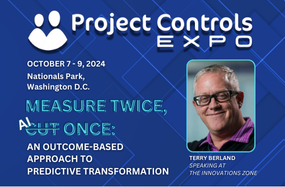How Risky is a GMP (Guaranteed Maximum Construction Price)?
Risk – what risk? From a customer point of view, a Guaranteed Maximum Price (GMP) for construction can look like a very smart solution. A GMP given by a contractor caps the total amount a customer will pay for a construction project. It is a ‘cost-plus’ agreement, in which the contractor is paid for costs incurred (up to a defined maximum) plus a fixed fee. That removes uncertainty for the customer. If the total cost of construction goes over the GMP, then the contractor, not the customer, must pay for the excess. On the other hand, if there turn out to be cost savings, then a GMP agreement often includes the total or partial reimbursement of such cost savings to the customer too. But what is the impact for the contractor?
New Risk-Sharing Models
To better handle Guaranteed Maximum Pricing, it is useful to understand a growing trend in construction project risk sharing. Owners are increasingly looking for ways to decrease the risk they take in funding construction work. They can do this by accelerating delivery of final results, so that they can put their building, bridge or other structure into service and see payback as soon as possible. They can also do this by transferring some of the risk to their providers. The earlier style was hand-offs of a project in a waterfall-style between separate companies, from design to building to operation and maintenance. The new style is for one provider to handle multiple phases or even the totality of the project. Choices and risks from one phase stay within and are assumed by that one provider in following phases.
Working with GMPs
Although a GMP can also help increase contractor profitability if cost underruns are shared between the customer and the contractor, there are also challenges to be met:
- Agreement about what the GMP covers. The project owner and the contractor must agree on what is included, even if the GMP is determined in the design or pre-construction phase. Procedures for project changes should also be clearly defined and how their impact on the Guaranteed Maximum Price will be handled.
- Precision in the pricing. There is a temptation for the contractor to increase pricing in order to compensate for increased risk. This may lead to the contractor becoming uncompetitive compared to other providers. Good cost estimating software allows a contractor to be more accurate and more precise in pricing estimates, consequently reducing contractor risk as well as customer risk.
- Tracking of real costs compared to projected costs. If a contractor handles several phases of a project, data from initial estimations that led to the GMP should be accessible and easy to use for comparison later. Some estimating software applications have built-in links for data to flow into accounting or project management applications.
- Justification of savings made. The final reckoning of what was spent compared with what was estimated needs to be clear for all and backed up with appropriate records. An example of a software suite providing the functionality for the items above is B2W ONE, hosted for users by LoadSpring. The B2W Estimate module in particular can be used for determining a GMP, with B2W modules Dispatch, Track and Maintain then covering activities through the rest of the construction project lifecycle.
From GMP to EMP and Beyond
Risk-sharing models in construction continue to evolve. The Estimated Maximum Price (EMP) is one such recent development. With an EMP, the risk of cost overruns is shared and financial incentives are defined to help project interests and owner and provider interests coincide. Good estimating software and associated modules will continue to support contractors and customers alike as these models develop further. Hosting any Project Management Estimate software on the SpringBoard, LoadSpring’s Cloud-based Project Management portal, provides convenient and secure access anywhere, effectively increasing ROI.








